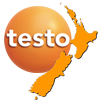
Conservationists in museums and other cultural installations are the cornerstone of preserving and fostering culture. They provide an environment that protects our history, while also offering a space in which the public are able to immerse themselves. This situation creates a unique catch-22 for these spaces. On one hand, light is invaluable for allowing people to closely examine the fine details of these collections. On top of this, exhibitions need to be presented in adequate lighting conditions for the publics viewings to be as comfortable an experience as possible. The flip side of this? Light can also be destructive. Light is able to damage dyes and inks, causing collections to deteriorate in well lit conditions.
So how do light levels inform the presentative maintenance of museum collections?
What is light and lux?
The naked eye is only able to detect a small sector of the spectrum of light. The full light spectrum goes far beyond that. The light spectrum is divided according to energy wavelength. We are able to perceive anything between 400-700 nanometers. However, below this band is ultraviolet (UV) rays and above it is infrared light. These waves are capable of deteriorating the quality of artefacts over time. This can severely jeopardise the long term quality of these artefacts. It is therefore a high priority that this energy is monitored and managed when storing and displaying museum collections.
A light meter is used to measure the intensity of white light. This data is recorded as a lux reading. A lux reading tracks energy based on one lumen (the quality of light emitted) per square meter. Across the world, 50 lux has been accepted as the maximum acceptable environmental light for preserving sensitive items. These items include:
- Prints, drawings, and water colour paintings
- Costumes and other textiles
- Manuscripts, and certain types of photographs
How does light and lux inform museum collection maintenance?
Different forms of light effect different materials. When measuring light, it is important that the light measure device covers the entire energy spectrum. Museum conservationists are able to control the different environments that cultural artefacts are exposed to by referring to this light data. Furthermore, this information helps to improve the long-term quality of these collections whilst still ensuring that the items are able to be exhibited in comfortable viewing conditions. Collection maintenance and display practices is informed by light and lux data in the following ways:
- Lux readings are used to determine the storage conditions individual items need. This means that sensitive collections that are affected by 50 lux are stored separately from items that are less sensitive to light damage.
- Light measures can be used to find the optimal balance between comfortable viewing light conditions and minimal UV levels. This makes the viewing experience pleasant for the public while still ensuring the safety of the collections.
- These tools can establish if any items require further protection with UV absorbing storage materials.
What light and lux measurement tools should be used?
Testo is well versed in supporting conservation work of New Zealand museums and cultural institutions, providing archivists the tools to accurately track light conditions.
The testo 160 THL - Wi-Fi data logger is the perfect tool for monitoring lux and light levels. It also provides numerous other environmental data measures. This ensures safer storage and exhibitions spaces. Testo also offers the Testo Lux probe, which when paired with the appropriate measuring instrument, is perfectly optimised for determining indoor light levels.
For further information about light measurement tools, contact the Testo team today!
